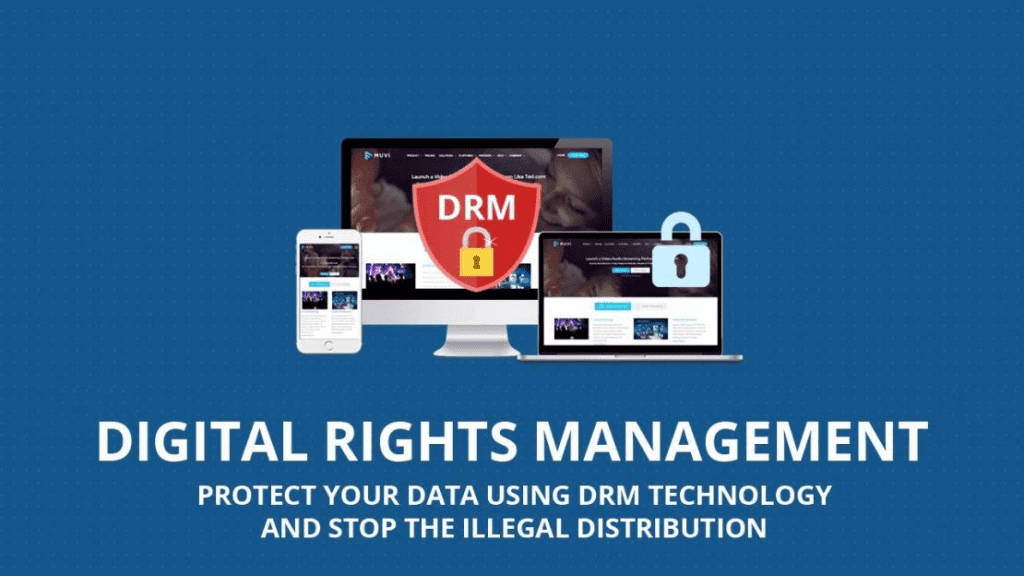DRM (Digital rights management) – Digital content copyright management is a series of access control technologies to limit infringement of copyrighted digital content ownership rights. In a word, DRM was born to control what users can do with digital content.

Reasons to use DRM
It is a fact that no one wants to have their intellectual property stolen, but currently, the awareness of digital copyright is not really popular and the fastest way to protect your own intellectual property is to do so. is to use DRM.
So specifically how DRM can help you protect your intellectual property:
– DRM helps protect your own valuable or confidential documents, content, videos, images, or audio files.
– Control who can access your content for a certain period of time or the device used to access it.
– Get detailed information and analytics about users’ use of your content
– Give users access to content without apps or plugins on a continuous basis
Which businesses should use DRM?
Currently, the easy access to the internet makes it easy for data to be stolen and an important thing that any company needs to pay attention to is digital copyright protection. The most basic that can be mentioned is the content that the company created and then posted on blogs, websites, …
A specific example to make it easier for you to imagine is that if content companies like Netflix do not have DRM, then no one will spend money to buy monthly subscriptions anymore, so the company will suffer revenue effects.
Finally, it can be said that businesses that should use DRM can name a few specific names such as:
– Online education business companies
– Entertainment/music company
– Film production company
– Bookmaker,…
Advantages and disadvantages of DRM

Exercising control over digital content with the DRM digital content rights management tool offers the following benefits and minor limitations:
Advantage
- Owners of digital content can easily control how users use their data files (gray matter).
- Users can read file content or DRM-controlled content without any separate application. The reason is that DRM can help you read content through third-party applications. (For example, you will not have to experience the situation like on Spotify, you can only listen to music on this application even if you buy the Premium version).
- When accessing, users will not need to perform cumbersome confirmation requests. This helps to improve the user experience.
- Since DRM-encrypted media can be used on any device, consumers will partially benefit from adopting DRM standards.
- DRM methods will ensure the safety of data along every step from content creation, and content loading until the content is in the hands of the user.
Disadvantages
- Some users, when they do not have full control over the digital content files they have paid for, will find it inconvenient or even annoying.
- Although specialized file-reading applications are not limited, users still have to go through specific applications to be able to read files with DRM. Without DRM, users can use applications that allow reading the desired file format.
- When the license provider stops working, DRM files will no longer be worth using while other normal files can be used forever.


Recent Comments